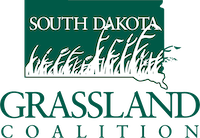Zane Grey
The Western author of the last century; created a wonderful picture of ranching and the cowboy life. His characters became heroes for many of his readers. As Grey did a great job speaking to the ranching culture, he did not attempt to speak to the culture of ranch management. There is a big difference between the two. It`s helpful to understand both cultures can exist together.
a revolutionary story
A young family, John and Lynn, began leasing the neighbor’s pastures five years ago. They knew from the beginning the land had been overgrazed for decades, but were glad to have a contiguous lease to their small acreage. However, they were not prepared for 3,000 acres of trouble.
Both John and Lynn grew up on ranches in South Dakota. Their fathers followed a traditional season-long grazing management. Wet years provided plenty of grass while in drier years the pastures were grazed short. John`s Dad told him one day that there was less grass during the dry years now compared to 40 years ago. They calved in March and fed a lot of hay. John’s Dad once showed him a picture of a man on horseback wearing a Stetson and sheepskin coat riding through a snowstorm and moving a mother cow with a very young calf, we can assume to the barn for shelter. He confided with John that the man in the picture was his hero.
John and Lynn wanted to learn how to fix the land on their new lease. Both started attending local pasture walks and grazing management schools. After attending a whole ranch planning school they both realized in order to accomplish their goals they were going to have to change the culture on the ranch. The first step was to develop both a grazing plan and a drought plan. The grazing plan added cross fences and water tanks, so the cows would calve on green grass and be more productive. Also, they moved the calving date to May. They started the summer season in a different pasture each year. John and Lynn didn’t need as much hay since they were grazing most of the winter and the cows gained weight in April and May for summer calving.
With their new ranch management culture the land began to heal. It took decades to “ruin” the land so it was going to be a slow process of healing it. But they watched as the soil became healthier. Rainwater began to soak in instead of runoff. After several years they added a small yearling herd to the rotation. Their land became a magnet for wildlife. The deer, grouse, and pheasant population flourished and John started leasing out hunting rights.
In the middle of all this John and Lynn`s parents watched their kids try new things. Skeptical at first they saw these abused pastures heal and begin to really produce grass. Five years into the deal John`s Dad asked him to help him set up a pasture rotation on his place. After watching his own land improve, he told John the cowboy in the snowstorm was still his hero, but he preferred calving on green grass over snow. The next year Lynn`s parents wanted help setting up a grazing plan with cross-fencing and water development.
conclusion
Changing the ranch management culture starts with focusing on four basics elements: Land, Production, Finances, Family. Each element is as important as the next. Healthy land absorbs and holds water, provides more financial returns long term, contributes to more productive livestock which in turn contributes to a stable family business.
This approach to ranch management may not reflect what many of us grew up with. However, it does represent a common sense approach to successful land management. If Zane Grey were a Whole Ranch Planning advocate, he might very well have romanticized the picture of a happy family living on productive land.
Dan Rasmussen is a third-generation cattle rancher living in south central South Dakota. Dan served on the board of the South Dakota Grassland Coalition for 18 years and is currently the education coordinator for the Grassland Coalition.
